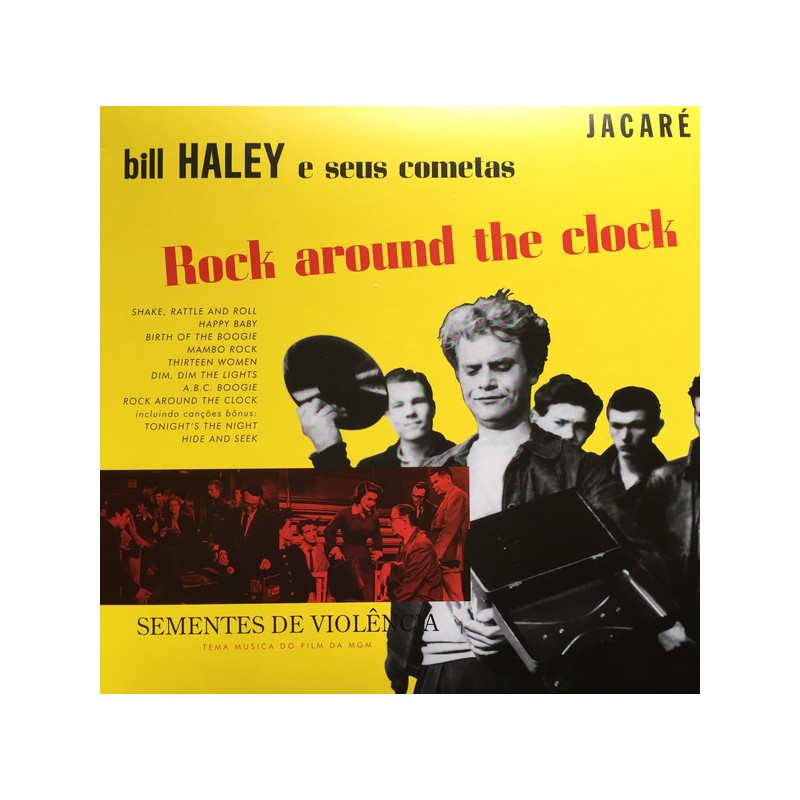

Haley and his Comets began performing the song on stage (Comets bass player Marshall Lytle and drummer Dick Richards say the first performances were in Wildwood, New Jersey at Phil and Eddie's Surf Club), but Dave Miller, his producer, refused to allow Haley to record it for his Essex Records label (Swenson suggests a feud existed between Myers and Miller). Īccording to the Haley biographies Bill Haley by John Swenson and Rock Around the Clock by Dawson, the song was offered to Haley by Jimmy Myers in the wake of his first national success, " Crazy Man, Crazy" in 1953, after being copyrighted with the U.S. The song also uses phrases from Count Basie's "Red Wagon", first recorded in 1939. Williams' song was very similar to Charley Patton's "Going to Move to Alabama", recorded in 1929 – which itself was at least partly derived from Jim Jackson's " Kansas City Blues" from 1927. However, the verse melody of "Rock Around the Clock" does bear a very close similarity to that of Hank Williams' first hit, " Move It On Over", from 1947. There are many blues songs with the theme of partying or making love "round the clock", with various actions specified at various hours. Though the titles are similar, the two songs bear little resemblance. In addition, it is sometimes erroneously stated that "Rock Around the Clock" is copied from a late-1940s Big Joe Turner recording, "Around the Clock Blues".

There were several earlier songs of the title "Rock Around the Clock" (by Hal Singer and Wally Mercer), but they are unrelated to the Freedman/Myers song. However, its exact authorship is disputed, with many speculating that Freedman wrote the song on his own. Freedman when it was copyrighted on March 31, 1953. The song was credited to Myers (as "Jimmy DeKnight") and Max C. The original arrangement of the song bore little resemblance to the version recorded by Haley, and was in fact closer to a popular instrumental of the day called " The Syncopated Clock" (written by Leroy Anderson). There are sources that indicate that "Rock Around the Clock" was written in 1953, but documents uncovered by historian Jim Dawson indicate it was in fact written in late 1952. In 2018, it was selected for preservation in the National Recording Registry by the Library of Congress as being "culturally, historically, or artistically significant." False starts This was later shortened to " (We're Gonna) Rock Around the Clock", though this form is generally only used on releases of the 1954 Bill Haley Decca Records recording most other recordings of this song by Haley and others (including Sonny Dae) shorten this title further to "Rock Around the Clock".
#ROCKIN AROUND THE CLOCK FULL#
The original full title of the song was " We're Gonna Rock Around the Clock Tonight!". 159 on the Rolling Stone magazine's list of The 500 Greatest Songs of All Time.Īlthough it was first recorded by Italian-American band Sonny Dae and His Knights on March 20, 1954, Myers claimed the song had been written specifically for Haley but, for various reasons, Haley was unable to record it himself until April 12, 1954. The recording is widely considered to be the song that, more than any other, brought rock and roll into mainstream culture around the world.

It was number 1 on the pop charts for two months and went to number 3 on the R&B chart. Haley's recording became an anthem for rebellious 1950s youth, particularly after it was included in the 1955 film Blackboard Jungle. (Bill Haley had American chart success with " Crazy Man, Crazy" in 1953, and in 1954, " Shake, Rattle and Roll" sung by Big Joe Turner reached No.

This is the first rock and roll record to top the pop charts in both the US and UK. It was a number one single for two months and did well on the United Kingdom charts the recording also reentered the UK Singles Chart in the 1960s and 1970s. The best-known and most successful rendition was recorded by Bill Haley & His Comets in 1954 for American Decca. Myers (the latter being under the pseudonym "Jimmy De Knight") in 1952. " Rock Around the Clock" is a rock and roll song in the 12-bar blues format written by Max C.


 0 kommentar(er)
0 kommentar(er)
